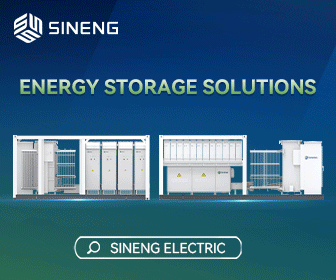Battery to Slash Energy Costs at Art Gallery of South Australia
The Art Gallery of South Australia is now being powered with the help of large-scale battery as part of an initiative that will soon also connect the State Library of South Australia and Adelaide High School.
The SIMEC ZEN Energy system provides a total of 64kWh of energy storage to the Art Gallery on Adelaide's North Terrace cultural boulevard, which can be charged from the grid to manage demand.
Installation of the battery in the gallery's sub-basement began in late July and was officially launched today after several weeks' testing.
The joint State Government-City of Adelaide initiative will allow the art gallery to purchase electricity to charge the battery when prices are low, such as at night, and use it to offset its power needs when prices are high.
The project is part of the South Australian capital's bid to become Australia's first carbon neutral city.
The gallery requires a very stable temperature and humidity level in all of its gallery and storage spaces to protect its extensive collection.
Art Gallery of South Australia Deputy Director Mark Horton said energy costs formed a very significant proportion of its operating budget, as would be the case for nearly all public institutions.
"Even though we are using an efficient air conditioning system it still uses a lot of energy because of the size of the building and strict regimen we need to have in place," he said.
"When you are dealing with numbers that are relatively large, as our energy consumption is here, even a five to 10 per cent reduction in our spend on electricity is significant.
"There are some buildings that are being designed to be very energy efficient but ours is a very historic building with a mix of materials and most art galleries and state institutions are in the exact same position as us."
SIMEC ZEN Energy has also installed smart energy storage on the City of Adelaide's Mile End Works Depot, through a separate contractual arrangement.
The battery systems, which are a demonstration of how the technology can help businesses save energy costs, were designed and built at SIMEC ZEN Energy's Innovation Centre at Tonsley, after the company won a $1 million South Australian Government tender to deliver the project.
As part of the project, SIMEC ZEN Energy has partnered with leading Australian energy-tech company GreenSync to include smart automation technology that will maximise the economic benefits of the systems across all sites.
Horton said the battery would not act as an uninterrupted power supply (UPS) in the event of a blackout but the gallery had separate systems to manage that.
"There's also some interesting functionality in this system, which will be rolled out over time and that is weather warnings and other warnings that will let us know when there is likely to be some kind of external event that may mean that we are going to use more energy or more expensive energy so the battery will be useful there as well," he said.
The battery systems, which are a demonstration of how the technology can help businesses save energy costs, will soon be able to be monitored online.
South Australian Energy Minister Tom Koutsantonis said more and more businesses would use these types of systems over time to flatten out their demand and lower power bills.
"By fitting these locally-manufactured energy storage systems to some of our most iconic buildings we can demonstrate the incredible opportunities that exist in this sector," he said.
"South Australia has now cemented its position as a world leader in renewable energy and storage, following the recent announcement of Tesla's grid-scale battery at Jamestown and SolarReserve's solar thermal plant at Port Augusta.
ZEN last month partnered with global company GFG Alliance to launch SIMEC ZEN Energy to help large industrial customers in South Australia use clean renewable energy to meet their demands.
ZEN Energy Founder and SIMEC ZEN Energy Director of Innovation Richard Turner said the company now had a full technology pathway from commercial solar and storage through to demand management and a balance of power supply capability for large industrial customers.
"Smart energy storage opens a whole new range of opportunities for commercial businesses to reduce energy costs, take a firm 'energy position' for the longer term, and improve their market competitiveness," he said.
The Lead | www.theleadsouthaustralia.com









